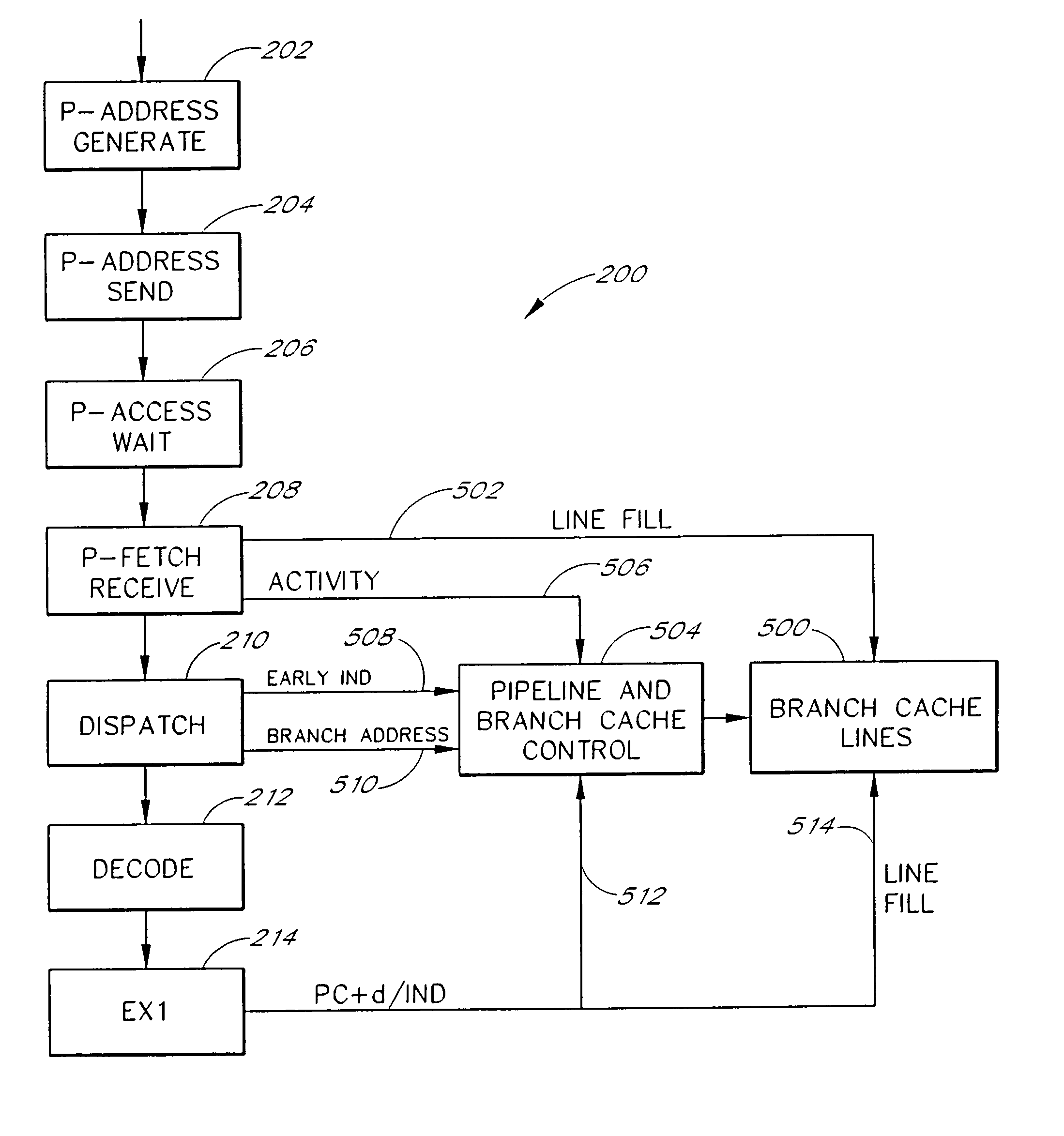Method and apparatus for high performance branching in pipelined microsystems
a microsystem and pipeline technology, applied in the field of microprocessor architectures, to achieve the effect of avoiding stalls, reducing system performance, and minimizing or eliminating delays
- Summary
- Abstract
- Description
- Claims
- Application Information
AI Technical Summary
Benefits of technology
Problems solved by technology
Method used
Image
Examples
Embodiment Construction
[0038]FIG. 1 is a block diagram that illustrates a conventional microcomputer pipeline 100 as would be found a Reduced Instruction Set Computer (RISC) or a Digital Signal Processor (DSP) employing a single issue load-store architecture. A first input of a first pipeline stage 102 receives instructions fetched from a program stored in memory or program cache. The prefetch stage 102 includes a prefetch buffer together with a program counter and next instruction address generation hardware. A decode stage 104 receives input from the prefetch stage 102 and provides decoded instruction data to a first execute stage (EX1) 106. The first execute stage 106 provides partial results to a second execute stage (EX2) 108. The first execute stage 106 also provides branch data to a second input of the prefetch stage 102 over a feedback path 112. The second execute stage 108 provides final results to a write-back stage (WB) 110. Different processor pipelines may have different numbers of execute st...
PUM
 Login to View More
Login to View More Abstract
Description
Claims
Application Information
 Login to View More
Login to View More - R&D
- Intellectual Property
- Life Sciences
- Materials
- Tech Scout
- Unparalleled Data Quality
- Higher Quality Content
- 60% Fewer Hallucinations
Browse by: Latest US Patents, China's latest patents, Technical Efficacy Thesaurus, Application Domain, Technology Topic, Popular Technical Reports.
© 2025 PatSnap. All rights reserved.Legal|Privacy policy|Modern Slavery Act Transparency Statement|Sitemap|About US| Contact US: help@patsnap.com



